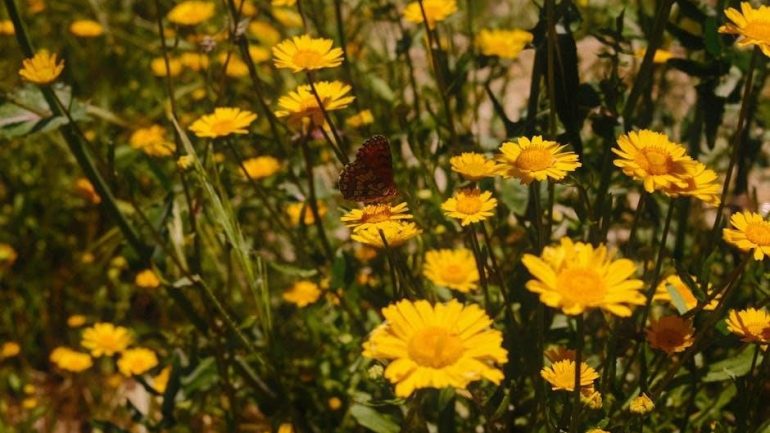Creating a butterfly garden brings beauty and life to your space while supporting biodiversity. It transforms your yard into a vibrant ecosystem, attracting these pollinators and fostering conservation. By planting nectar-rich flowers and host plants, you create a sanctuary for butterflies and caterpillars, offering shelter and sustenance. This rewarding hobby connects you with nature, promoting environmental stewardship and the joy of watching these delicate creatures thrive.
Why Create a Butterfly Garden?
Creating a butterfly garden is a rewarding way to enhance your outdoor space while supporting local ecosystems. These gardens attract pollinators, fostering biodiversity and aiding in plant reproduction. By planting nectar-rich flowers and host plants, you provide essential resources for butterflies and caterpillars, helping sustain their life cycles. This effort contributes to conservation, especially as butterfly populations face threats like habitat loss. A butterfly garden also offers educational opportunities, teaching others about pollination and wildlife preservation. It’s a chance to connect with nature, enjoy vibrant beauty, and play a role in protecting these vital creatures. Whether for personal joy or environmental stewardship, a butterfly garden is a meaningful and impactful project.
Understanding the Needs of Butterflies
Butterflies have specific needs that must be met to thrive. They rely on sunlight to warm their bodies and fuel their metabolism, making sunny locations essential. Shelter from wind and predators is also crucial, provided by dense shrubs or trees. Adult butterflies need nectar-rich flowers for energy, while caterpillars require host plants specific to their species for food. Water sources, like shallow ponds or damp soil, are vital for hydration and mineral intake. Understanding these needs helps create a welcoming environment for butterflies, ensuring their survival and attracting them to your garden. By addressing these elements, you can support both adult butterflies and their larvae, fostering a thriving ecosystem tailored to their requirements.
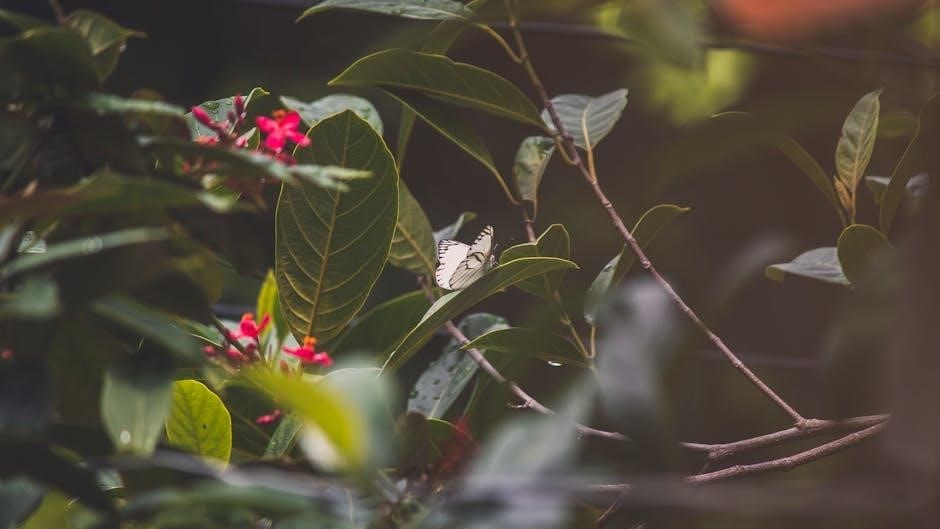
The Importance of Native Plants in Butterfly Gardens
Native plants are essential for creating a thriving butterfly garden, as they provide the specific resources butterflies need to survive. These plants have co-evolved with local butterfly species, ensuring they offer the right nectar for adults and host leaves for caterpillars. Native milkweed, for instance, is vital for monarch caterpillars, while coneflowers and asters attract a variety of adult butterflies. Using native plants reduces maintenance, as they are naturally adapted to local soil and climate conditions. They also support biodiversity by attracting other pollinators and wildlife. Incorporating native plants ensures your garden becomes a haven for butterflies, fostering their life cycle and contributing to the health of your local ecosystem. This approach creates a sustainable and ecologically balanced environment tailored to the needs of these delicate creatures.
Plant Selection for Butterfly Gardens
Choose nectar-rich flowers like zinnias and coneflowers for adult butterflies, and host plants such as milkweed for caterpillars. Native species ensure optimal support for local butterfly life cycles.
Nectar Plants for Adult Butterflies
Nectar plants are essential for adult butterflies, providing the energy they need to fly and reproduce. Flowers like zinnias, coneflowers, and lantanas are rich in nectar and attract a variety of species. Tubular flowers, such as trumpet vines, allow butterflies to sip nectar using their long proboscis, while flat flowers like asters offer easy landing platforms. Planting a mix of bloom times ensures a constant nectar source throughout the growing season. Native plants are particularly effective, as they naturally attract local butterfly species. Incorporating these plants creates a vibrant, dynamic garden that supports adult butterflies while adding beauty to your outdoor space. Avoid pesticides to protect these pollinators and ensure your garden remains a safe haven for them.
Host Plants for Butterfly Caterpillars
Host plants are crucial for butterfly caterpillars, as they provide the specific food sources needed for growth and development. Different butterfly species rely on particular plants for their larvae, such as milkweed for monarchs, dill and parsley for Black Swallowtails, and passion vines for Fritillaries. These plants are essential for caterpillars to survive and eventually transform into butterflies. Incorporating native host plants into your garden attracts local butterfly species and supports their life cycle. By planting these species alongside nectar-rich flowers, you create a complete ecosystem for butterflies. Avoiding pesticides is vital to protect caterpillars, ensuring they can safely feed and grow. Host plants are the foundation of a thriving butterfly garden, offering sustenance and shelter for these delicate creatures during their most vulnerable stage.
Seasonal Variety in Plant Selection
Seasonal variety in plant selection ensures a constant source of nectar and host plants for butterflies throughout the year. Planting flowers that bloom at different times guarantees a steady food supply for adult butterflies and caterpillars. For example, coneflowers and zinnias bloom in summer, while asters and fall flowers provide late-season nectar. Incorporating plants with varying bloom times creates a dynamic garden that attracts butterflies year-round. This approach also supports the life cycles of different butterfly species, ensuring their survival and reproduction. By choosing plants that thrive in each season, you create a resilient and welcoming environment for pollinators, enhancing the beauty and biodiversity of your garden. Seasonal variety is key to maintaining a vibrant and thriving butterfly sanctuary.
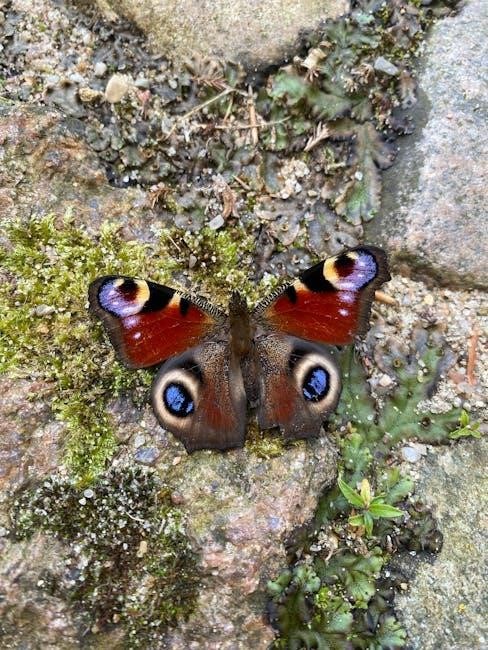
Designing Your Butterfly Garden
Designing a butterfly garden involves selecting a sunny, wind-protected spot and incorporating shelter like shrubs or trees. Arrange plants by height and bloom times to create a welcoming habitat for butterflies and caterpillars, ensuring year-round beauty and biodiversity.
Choosing the Right Location for Sunlight
Selecting a sunny location is crucial for a thriving butterfly garden. Butterflies rely on sunlight to warm their bodies and fuel their activity, making it essential to choose a spot that receives at least six hours of direct sunlight daily. Ideal locations are south-facing areas, as they typically receive the most sunlight throughout the day. Avoid shaded spots, as they may not provide enough warmth for butterflies to be active. Additionally, ensure the area is level or gently sloped to allow for proper drainage and even sunlight distribution. By placing your garden in a sunny location, you create an inviting space for butterflies to flutter, feed, and thrive.
Creating a Wind-Protected Environment
Protecting your butterfly garden from strong winds is essential for creating a welcoming space for these delicate creatures. Butterflies struggle to fly and feed in windy conditions, so shelter is crucial. Plant dense shrubs, native grasses, or small trees around the perimeter of your garden to act as natural windbreaks. Consider adding a fence or wall if your yard is particularly exposed. These barriers will help block harsh gusts and create a calm environment. Place taller plants toward the windward side to deflect wind and allow shorter flowers to thrive in the sheltered area. This protected space will encourage butterflies to linger, feed, and roost, making your garden a peaceful haven for them. Proper wind protection ensures your garden remains a safe and enjoyable habitat for butterflies year-round.
Incorporating Shelter and Water Sources
Incorporating shelter and water sources is vital for creating a welcoming butterfly garden. Butterflies need protection from harsh weather and predators, which can be provided by planting dense shrubs, native grasses, or small trees. These natural shelters also serve as roosting sites for butterflies to rest. Additionally, include a shallow water source, such as a dish or birdbath with fresh water and a few rocks for perching. Mud puddles or damp sand can also attract butterflies, as they extract essential minerals from these sources. Flat stones placed in sunny spots allow butterflies to bask and regulate their body temperature. By integrating these elements, you create a habitat that supports both adult butterflies and their caterpillars, ensuring a thriving and inviting ecosystem for these beautiful creatures.
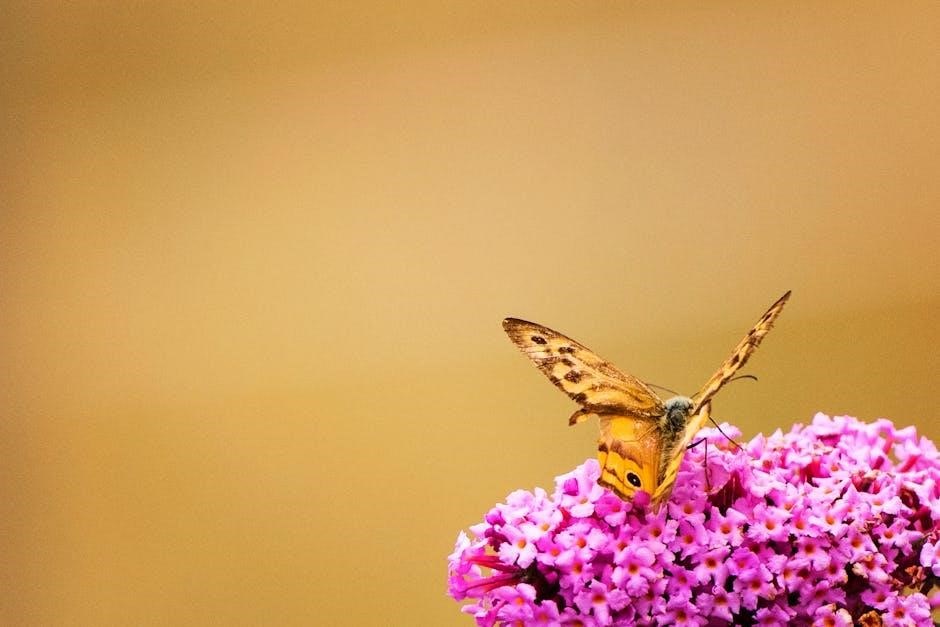
Maintenance Tips for a Thriving Butterfly Garden
Regularly water plants, avoid pesticides, and embrace organic practices to maintain a healthy butterfly garden. Ensure soil remains fertile and protect plants from extreme weather conditions for optimal growth.
Soil Preparation and Organic Gardening Practices
Preparing the soil is essential for a thriving butterfly garden. Use compost and mulch to enrich the soil, ensuring it remains fertile and well-draining. Avoid chemical fertilizers and pesticides, as they can harm butterflies and other pollinators. Instead, adopt organic gardening practices, such as introducing beneficial insects like ladybugs to control pests naturally. Regularly water plants deeply but avoid overwatering, which can lead to root rot. Maintain a diverse range of native plants, as they are adapted to local soil conditions and require less maintenance. Seasonal adjustments, like adding organic matter in spring and fall, will keep the soil healthy year-round. By focusing on natural methods, you create a sustainable environment that supports both plants and butterflies, fostering a balanced ecosystem.
Watering Strategies for Butterfly-Friendly Plants
Watering is crucial for maintaining healthy plants in a butterfly garden. Ensure the soil remains consistently moist but not waterlogged, as this can harm roots. Nectar plants and host plants thrive in well-draining soil, so avoid overwatering, which can lead to root rot. Use soaker hoses or gentle sprinklers to deliver water directly to the soil, preventing nectar from being washed away. Butterflies also need water sources, so consider adding shallow dishes or puddles with fresh water and stones for landing. Adjust watering based on seasonal changes, increasing frequency during hot summer months and reducing in cooler seasons. Proper hydration supports plant health, ensuring a steady supply of nectar and host resources for butterflies and caterpillars alike, fostering a thriving ecosystem.
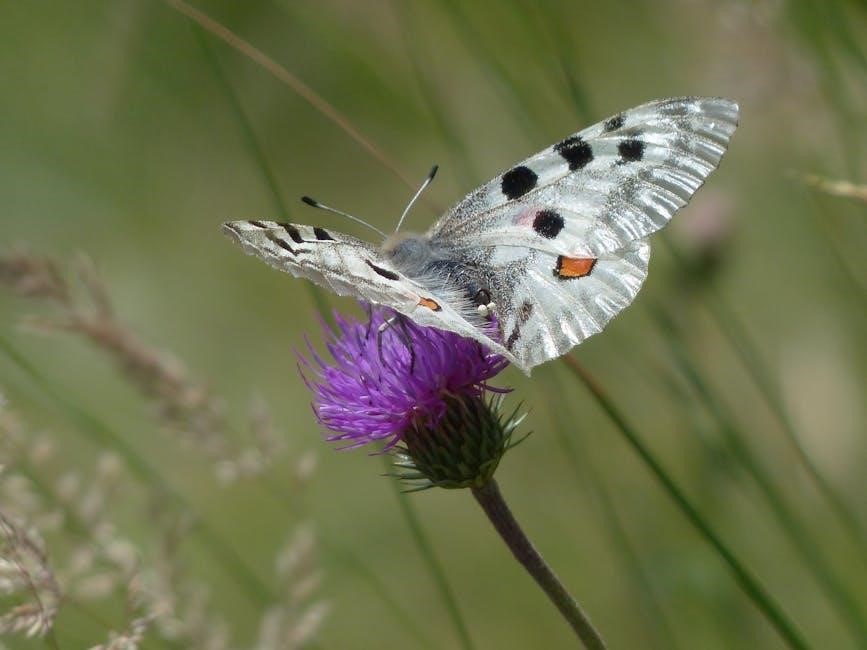
Avoiding Pesticides and Using Natural Pest Control
Avoiding pesticides is essential for maintaining a butterfly-friendly garden, as these chemicals can harm or kill butterflies and caterpillars. Instead, adopt natural pest control methods to protect your plants while preserving the delicate ecosystem. Encourage beneficial insects like ladybugs and lacewings, which naturally prey on common garden pests. Hand-picking pests or using fine-mesh barriers can also effectively manage infestations without harming butterflies. Organic solutions like neem oil or insecticidal soap are safer alternatives for controlling pests, though they should be used sparingly and with caution. Maintaining healthy, robust plants through proper watering and nutrient-rich soil can also help them withstand pest damage. By avoiding pesticides and embracing natural methods, you create a safe haven for butterflies and other pollinators to thrive.
Challenges and Solutions in Butterfly Gardening
Butterfly gardening faces challenges like pests, diseases, and weather impacts. Solutions include using natural pest control, adapting to seasonal changes, and ensuring ecosystem balance to support butterfly health sustainably.
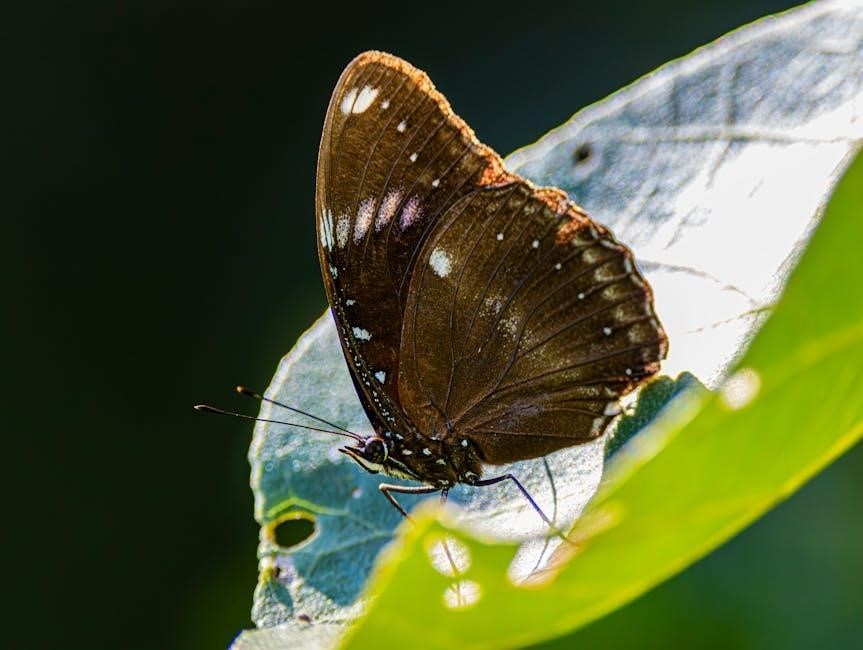
Common Pests and Diseases in Butterfly Gardens
Butterfly gardens often face challenges from pests like aphids, spider mites, and caterpillars, which can harm plants. Aphids suck sap from flowers, while spider mites cause yellowing leaves. Caterpillars, though beneficial, can defoliate plants if left unchecked. Diseases like powdery mildew and root rot can also affect plants, especially in humid conditions. To manage these issues, use natural remedies such as neem oil or insecticidal soap, which are safer for butterflies. Introducing natural predators, like ladybugs, can also help control pests. Regularly inspecting plants and maintaining good air circulation can prevent diseases. Avoid using pesticides, as they harm butterflies and caterpillars. By adopting organic practices, you can protect your garden while supporting its delicate ecosystem.
Managing Seasonal Changes and Weather Impact
Seasonal changes and weather conditions significantly impact butterfly gardens, requiring adaptive strategies to ensure plant and butterfly health. During warmer months, plants may need more frequent watering, while colder seasons demand protection for sensitive species. Extreme weather, such as heavy rain or frost, can damage plants and disrupt butterfly habitats. To mitigate these effects, use shelters or bring potted plants indoors during harsh conditions. Observing weather patterns and adjusting care routines is essential. For example, providing shade during intense heat or mulching to retain moisture can help plants thrive. By staying attuned to seasonal shifts and weather fluctuations, gardeners can create a resilient environment that supports butterflies and plants throughout the year, ensuring a vibrant and welcoming habitat for these pollinators.
Adapting to Local Ecosystem Conditions
Adapting your butterfly garden to local ecosystem conditions ensures its success and sustainability. Start by researching native butterfly species and their preferred plants, as these are naturally suited to your region’s climate and soil. Consider factors like sunlight, rainfall, and wind patterns when selecting a location. Native plants are ideal because they require less maintenance and are more resistant to local pests and diseases. Additionally, soil type and moisture levels play a crucial role in plant health, so choose species that thrive in your area’s conditions. By aligning your garden with the local ecosystem, you create a harmonious environment that supports both butterflies and the surrounding biodiversity, fostering a thriving and resilient habitat for years to come.
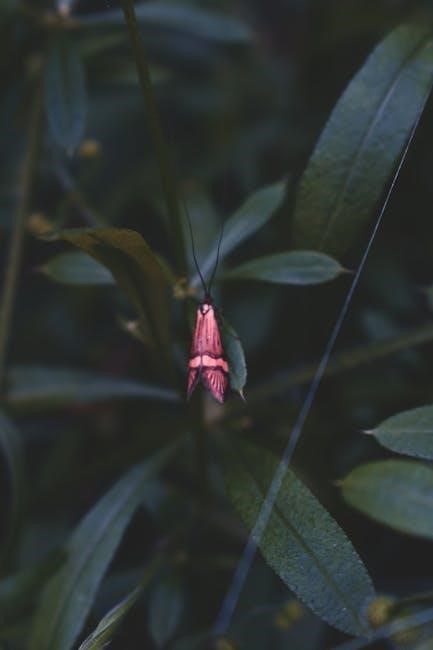
Monitoring and Adapting Your Garden
Monitoring your garden involves observing butterfly behavior and plant responses, allowing you to adapt and improve your space for better biodiversity and ecosystem support.
Observing Butterfly Behavior and Plant Response
Observing butterfly behavior helps you understand their preferences and needs. Notice which flowers they frequent for nectar, such as zinnias or coneflowers, and which host plants attract egg-laying females, like milkweed for monarchs or parsley for swallowtails. Tracking plant responses, such as bloom times and growth patterns, allows you to refine your garden’s seasonal variety. Over time, you’ll identify which plants thrive and which may need replacement. This process ensures your garden remains a welcoming habitat, supporting both adult butterflies and their caterpillars. Regular observation also helps you spot challenges early, like pests or nutrient deficiencies, enabling timely adjustments. By adapting based on these insights, you create a dynamic, resilient ecosystem that fosters biodiversity and attracts a wider variety of butterfly species.
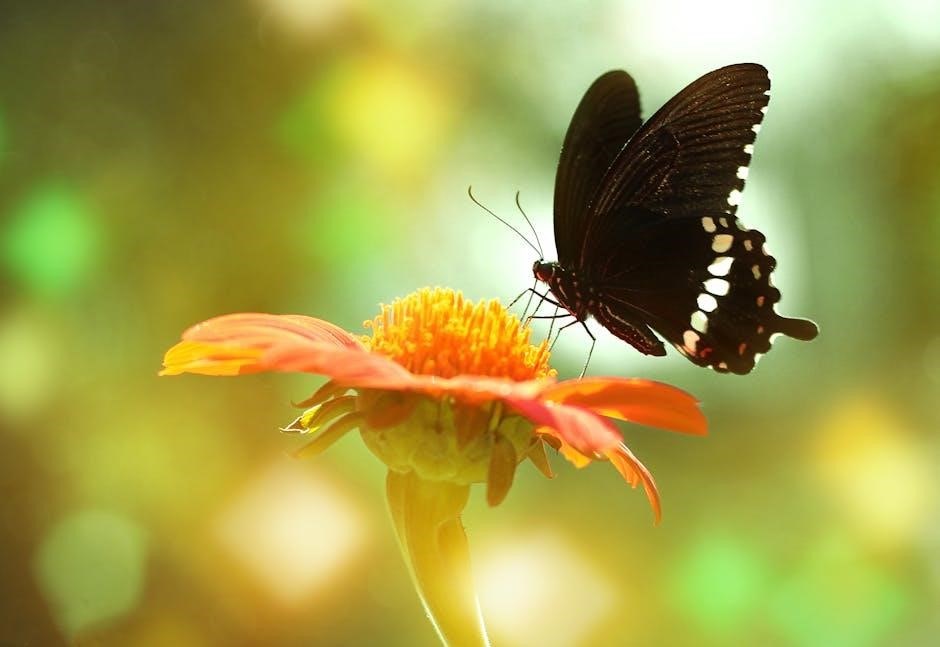
Adjusting Plant Selection Based on Performance
Evaluating plant performance is crucial for maintaining a thriving butterfly garden. Monitor which plants attract the most butterflies and caterpillars, noting their bloom duration and resilience. Replace underperforming plants with alternatives that better suit local butterfly species, such as swapping non-native flowers for native milkweed or zinnias. Consider seasonal variations, ensuring a constant nectar source by adding plants that bloom at different times. If certain host plants aren’t attracting caterpillars, try substituting them with species-specific favorites, like dill for swallowtails. Regularly assess soil health and sunlight exposure, as these factors impact plant vitality; By refining your plant selection, you optimize your garden’s appeal to butterflies, fostering a dynamic and resilient ecosystem that supports both adult butterflies and their larvae throughout the year.
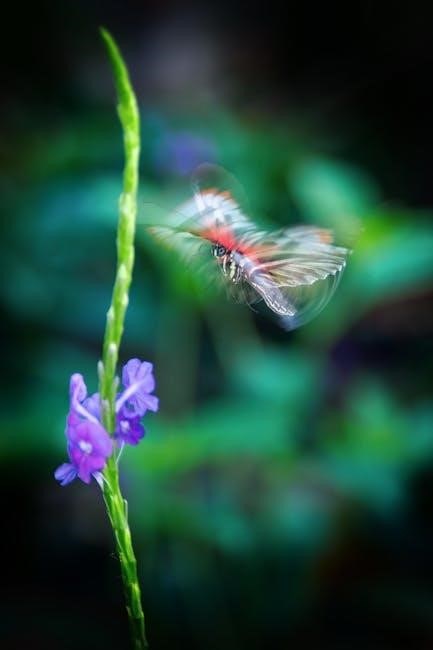
Engaging the Community and Conservation Efforts
Share your passion by educating others about butterfly gardens, fostering community involvement in pollinator conservation. Participate in citizen science projects and register your garden as a monarch waystation to support larger conservation goals.
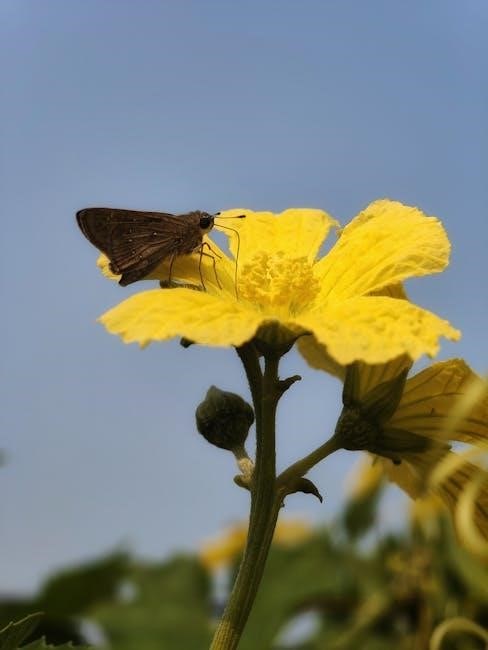
Educating Others About Butterfly Gardens
Educating others about butterfly gardens fosters community involvement in pollinator conservation. Share knowledge on native plants, nectar sources, and host plants to inspire others to create their own sanctuaries. Encourage local schools and gardening groups to participate, emphasizing the role of butterflies in ecosystems. Provide resources like field guides and online tools to help others identify species and plan gardens. Highlight the importance of avoiding pesticides and creating wind-protected spaces. By spreading awareness, you empower others to contribute to biodiversity and enjoy the beauty of butterflies. Community engagement can lead to larger conservation efforts, making a significant impact on local pollinator populations.
Participating in Citizen Science Projects
Participating in citizen science projects is a rewarding way to contribute to butterfly conservation while enhancing your gardening experience. Programs like the Monarch Watch and the National Wildlife Federation’s Certified Wildlife Habitat allow you to track butterfly populations and share data with researchers. By monitoring species in your garden, you help scientists understand migration patterns, habitat needs, and population trends. Many programs provide guides and tools to identify butterflies and record observations. Sharing your findings online or through local conservation groups fosters a sense of community and amplifies the impact of your efforts. Citizen science not only deepens your knowledge of butterflies but also empowers you to make a tangible difference in their survival and conservation.
Creating a butterfly garden fosters biodiversity, supports pollinators, and brings joy through nature’s beauty, offering a lasting impact on local ecosystems and personal well-being alike.
The Rewards of Creating a Butterfly Garden
Creating a butterfly garden offers numerous rewards, from the beauty of vibrant flowers to the joy of watching butterflies thrive. It provides a peaceful retreat, fostering a connection with nature and promoting environmental stewardship. By supporting pollinators, you contribute to local biodiversity and ecosystem health. The transformation of your space into a sanctuary for these delicate creatures brings a sense of accomplishment and wonder. Observing the life cycle of butterflies, from caterpillars to winged adults, adds educational value and fascination. This rewarding hobby not only enriches your life but also supports conservation efforts, making it a meaningful and lasting endeavor for nature lovers of all ages.
Long-Term Benefits for Local Ecosystems
Creating a butterfly garden provides lasting benefits for local ecosystems by supporting pollinators and fostering biodiversity. These gardens serve as habitats for butterflies and other wildlife, ensuring the survival of species that are vital to ecosystem health. By planting native flowers, you help maintain the balance of nature, as pollinators contribute to plant reproduction and seed production. Over time, butterfly gardens can enhance local food chains, supporting birds, bees, and other beneficial insects. They also promote soil health and reduce the need for pesticides, creating a sustainable environment. This long-term investment in nature helps preserve ecosystems for future generations, ensuring the continued beauty and functionality of natural habitats.
